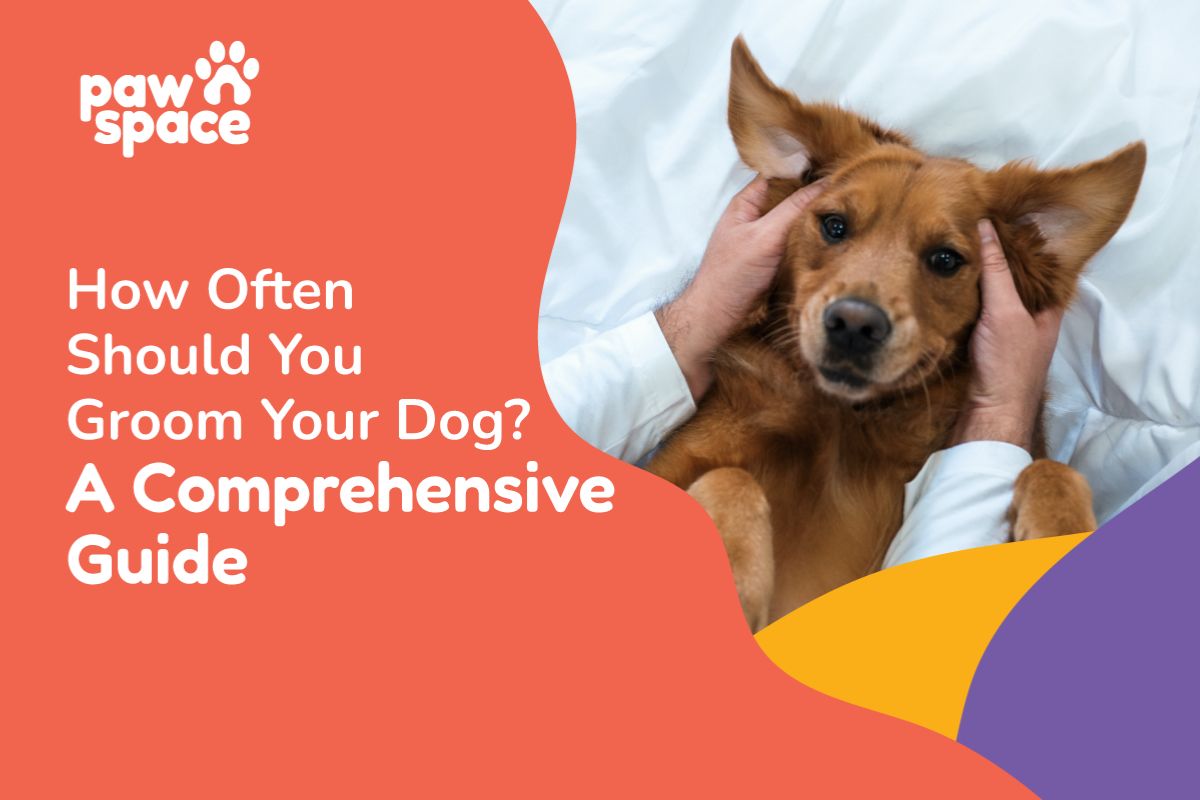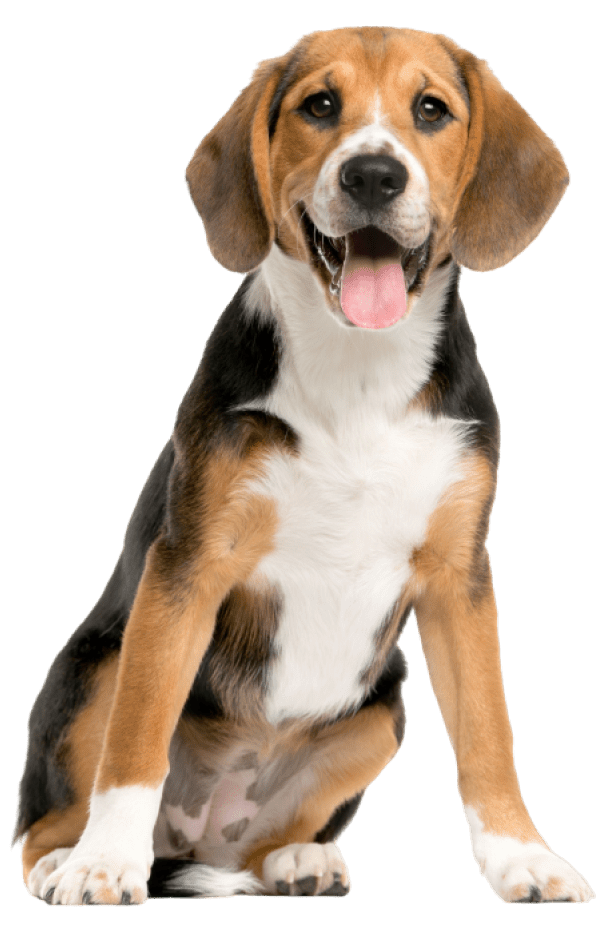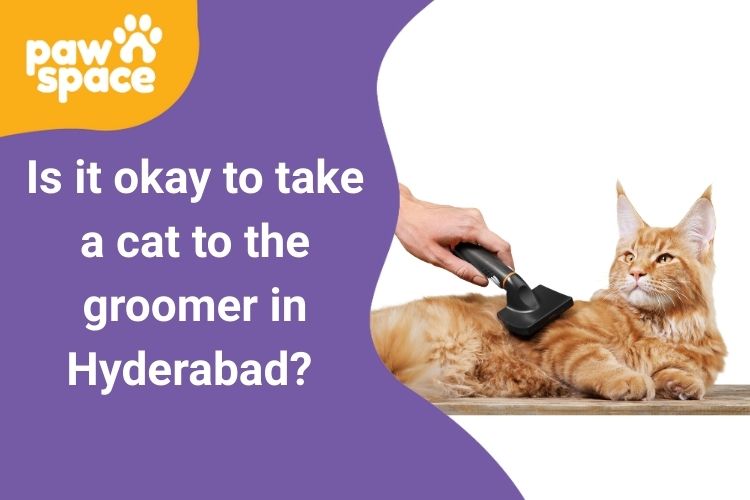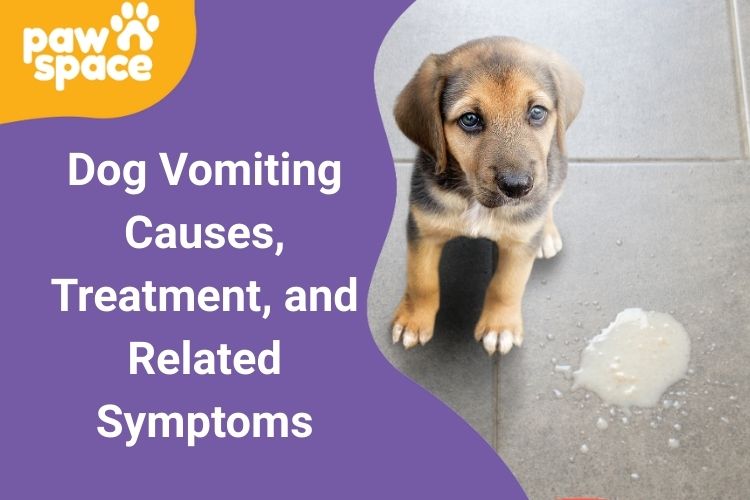Every dog needs (no, actually deserves) regular grooming for good health and well-being. The frequency of grooming depends on your dog’s breed, coat type, and lifestyle. In this blog, we will help you determine How Often Should You Groom Your Dog?
Table of Contents
Toggle- Introduction
- Factors Affecting Frequency of Grooming
- 1. Breed and Coat Type
- 2. Lifestyle and Activity Level
- 3. Skin and Health Conditions
- Grooming Schedule Recommendations
- 1. Short Haired Breeds
- 2. Medium-Haired Breeds
- 3. Long-Coated Breeds
- 4. Double-Coated Breeds
- 5. Non-Shedding Breeds
- Tips for Effective Grooming
- Groom Your Dogs With Pawspace
- Conclusion
- FAQs – Related to How Often Should You Groom Your Dog
- 1. How often should I groom my dog?
- 2. Can I groom my dog at home, or should I take them to a professional groomer?
- 3. What should I do if my dog dislikes grooming?
- 4. How do I keep my dog’s coat from matting and tangling?
- 5. What are the signs of skin issues for dogs that I should be aware of?
Introduction
Grooming your dog becomes the main aspect of responsible pet ownership. It makes your dog look their best, besides affecting their well-being and health as a whole. However, the frequency of grooming differs from one dog to another and depends on the breed, coat type, and lifestyle of your dog. Let us explore the different factors influencing the grooming cycle and gives tips to build a suitable grooming schedule for your dog.
Factors Affecting Frequency of Grooming
1. Breed and Coat Type
Different breeds have different grooming needs. For instance, dogs that are long-haired and thick-coated like Golden Retrievers and Shih Tzus need frequent grooming than those that are short-haired like Beagles and Dachshunds. Double-coated breeds like Huskies and German Shepherds demand proper brushing in controlling their shedding. Curly-coated breeds like Poodles and Bichon Frises also have different requirements of grooming to prevent matting.
2. Lifestyle and Activity Level
Dogs that are mostly outdoors or exercise in activities like hiking and swimming will need grooming more often. They need cleaning to remove the dirt, debris, and allergens that may attach to their coat. Active dogs also need to be groomed regularly to ensure that their coat is healthy and free from matting. Less active or indoor dogs may not be groomed often, but they also need regular maintenance of their coats.
Some dogs shed more than others, and regular grooming can help in managing the amount of hair they lose. Labradors and Corgis are known to be heavy shedders, especially during seasonal changes. Brushing them several times a week can help control loose fur and keep your home cleaner. Using de-shedding tools can also be helpful during peak shedding seasons.
3. Skin and Health Conditions
Dogs with skin conditions or allergies may require more frequent grooming to keep their skin clean and free from irritants than the regular, healthy ones. Regularly grooming them allows you to monitor your dog’s skin health and address any issues promptly. Dogs with conditions like dermatitis, hot spots, or flea allergies often require special attention and more frequent baths to manage their symptoms.
Additionally, here are the benefits of grooming your golden retriever and benefits of grooming your husky
Grooming Schedule Recommendations
1. Short Haired Breeds
Most of these breeds, such as Beagles, Boxers, and Chihuahua, require grooming at least once every 4 to 6 weeks. Brushing the coat daily may help the loose hair come off easily, leaving it shiny. Bathing is usually about once every 4 to 6 weeks for maintenance of cleanliness on the coat.
2. Medium-Haired Breeds
Breeds with medium-length coats, like Golden Retrievers, Border Collies, and Cocker Spaniels, require grooming to be done every 4 to 8 weeks. Brushing them at least two to three times a week is necessary to prevent matting and to maintain a healthy coat. Their hair requires regular bathing, usually within a frequency of 6 to 8 weeks, along with trims.
3. Long-Coated Breeds
The Shih Tzu, Afghan Hound, and Yorkshire Terrier are a few examples of breeds that should be groomed every 3 to 6 weeks because of their long, thick coats. In between grooming, brush daily to avoid tangles and mats. Regular trims and baths every 4 to 6 weeks keep their coat in healthy condition.
4. Double-Coated Breeds
Breeds with double coats, such as Huskies, German Shepherds, and Alaskan Malamutes, need to be groomed every 4 to 8 weeks. Regular brushing several times a week helps keep the shedding in check and their undercoat nice and healthy. A more frequent brushing and de-shedding program during shedding season is needed.
5. Non-Shedding Breeds
The Poodles, Bichon Frises, and Portuguese Water Dogs are non-shedding breeds that require frequent grooming every 4 to 6 weeks. These breeds need constant trimming and brushing to keep their coat healthy and prevent matting. Most of the time, they require professional grooming to ensure the proper maintenance of their coat.
Additionally, here are ways to encourage positive behaviour in dogs
Tips for Effective Grooming
- Use the right tools
- Invest in good-quality grooming tools designed for your dog’s coat type.
- Be gentle and handle your dog with care during grooming sessions.
- Use gentle strokes and be mindful of sensitive areas.
- Regular baths depending on the coat type and activity level of your dog, regular baths can help keep the coat clean and free from dirt and allergens.
- Use a dog-specific shampoo and conditioner to avoid drying out the skin.
- Overbathing can strip the coat of natural oils, so it is usually sufficient to bathe every 4 to 8 weeks.
- Frequent ear cleaning and dental care will ensure a healthy life for your dog. Clean your dog’s ears using the solutions advised by your vet, and brush their teeth with dog toothpaste to prevent further dental problems.
- Regular grooming helps monitor for health issues such as lumps, bumps, skin irritations, and parasites.
Groom Your Dogs With Pawspace
More than providing a regular brushing schedule, there’s a necessity for developing healthy grooming habits for your furry friends. Giving them simple, yet efficient techniques in grooming makes it easy and enjoyable to deal with, thus removing the pressure of handling mats and tangles.
At Pawspace we are committed to providing top-notch care and companionship for your beloved pets. We take care of pet grooming, pet boarding, pet sitting, doorstep dog training, dog fresh food, dog walking, pet taxi/ cab, pet relocation, car grooming and pet funeral.
India’s largest pet care ecosystem that is cage-free, and cruelty-free with verified pet sitters and service providers who see pets as a family!
Conclusion
Grooming is an essential part of any dog’s care routine. Knowing the factors that affect grooming frequency and adhering to the recommended schedule can keep your dog’s coat healthy and shiny. Regular grooming not only keep your dog looking their best but also promotes their overall health and well-being. Establishing a regular grooming routine and using the right tools and techniques, will be comfortable and happy for your furry friend.
Also, check the frequent updates on our Pawspace Instagram page
FAQs – Related to How Often Should You Groom Your Dog
1. How often should I groom my dog?
The frequency of grooming depends on your dog’s breed, coat type, and lifestyle. Refer to the grooming schedule recommendations for specific guidance.
2. Can I groom my dog at home, or should I take them to a professional groomer?
You can absolutely groom your dog at home with the right tools and techniques. But, professional groomers can provide specialized services and handle complex grooming needs.
3. What should I do if my dog dislikes grooming?
Use positive reinforcement, such as treats and praise, to make grooming a positive experience. Start with short sessions and gradually increase the duration as your dog becomes more comfortable.
4. How do I keep my dog’s coat from matting and tangling?
Brushing is a good way to ensure they do not matt or tangle. A detangling spray makes it easier to brush as it reduces discomfort for your dog.
5. What are the signs of skin issues for dogs that I should be aware of?
Look for redness, swelling, flakiness, bald spots, or any unusual lumps or bumps. In case you observe any of these symptoms, report them to your veterinarian for further examination.


















